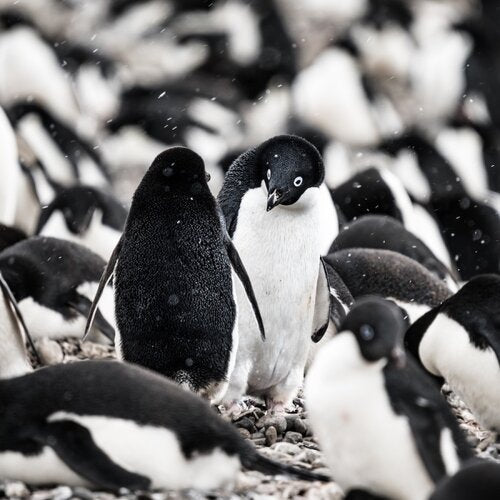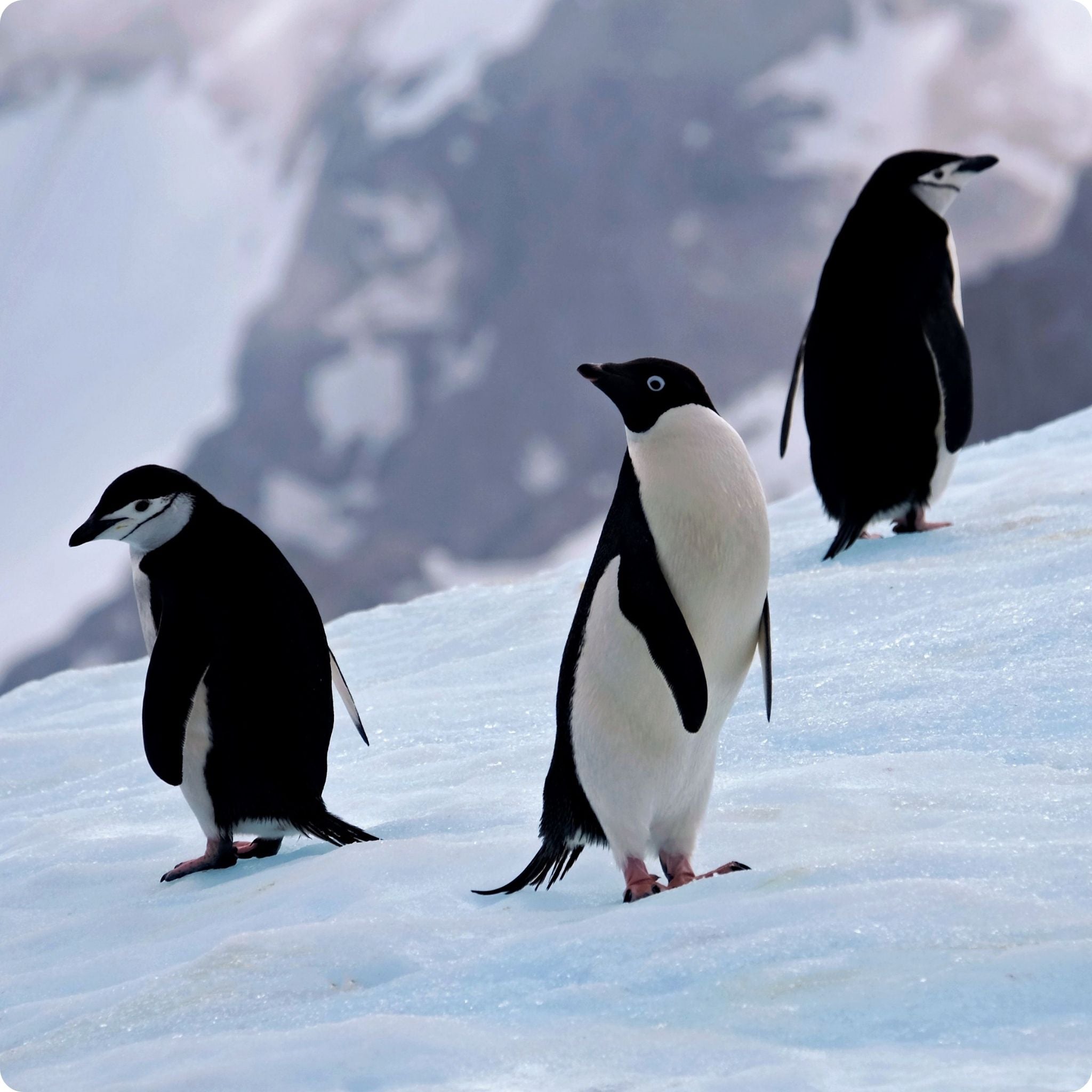
Adelie Penguin
Learn all about the feisty Adélie penguin with our super stats, wow your friends with some fascinating Adélie facts, read about where these small but mighty creatures live, how they spend their day and what they eat. Understand what makes Adélie penguins so important and how climate change is threatening their future.
The smallest penguin!
The Adélie is the smallest and also the most widespread species of penguin in the Antarctic, growing to just 70cm tall. Male and female Adélie penguins have very similar features, making it difficult to tell them apart. They both have a characteristic 'tuxedo' look, comprising a black back and head, white chest and tummy and white rings around their eyes. In spite of their cute appearance, Adélies can be feisty and have been known to take on potential predators, including seals or large seabirds with their flippers.


Where do Adélie penguins live?
Adélie penguins live on the Antarctic continent and on the surrounding coastal islands, including South Orkney and the South Sandwich Islands. They live on or close to the sea ice all their life, but only breed on ice-free land.
Along with the Emperor penguin, Adélie’s are the only other penguin species that truly make Antarctica their home by living and breeding there.

How do Adélie penguins spend their day?
Adélie penguins spend their winter on the ice pack where the air temperature is higher than on the land and where they can find cracks in the ice to feed through.
Despite their renowned waddle, these penguins regularly travel many miles crossing the sea ice to reach land in the spring so they can build their nests.
Penguins walk at a speed of around 1.5 miles per hour on the ice but also slide on their stomach or ‘toboggan’, using their feet to propel them along - a very efficient way to travel!
During the spring breeding season in late October, the penguins congregate in large communities or ‘colonies’ along the rocky Antarctic coastline. These colonies can include thousands of penguins.

Adélies build their nests with small stones; both the males and females taking turns to sit on their eggs to keep them warm and safe from predators. Male Adélie penguins also help their mates rear their young, not leaving their chicks alone until around three weeks. Between seven and nine weeks the young penguins begin to swim, they tend not to return to the colony until they are old enough to breed themselves, when they are around three years old.
An Adélie penguin can swim at speeds of between 2.5 and 5 miles per hour, but can reach up to 9.3 miles per hour when hunting or fleeing from its main predator - leopard seals or killer whales.


What do Adélie penguins eat?
Adélies are amazing swimmers, known for travelling distances of up to 185 miles in a round trip to hunt for a meal. They can dive to great depths, but tend to hunt in shallower water. Adélie penguins mainly feed on tiny shrimp-like creatures called krill, also fish, jellyfish and squid. They are excellent predators and very efficient foragers.
Why are Adélie penguins so important?
Adélie penguins are an integral part of the Antarctic food chain, essential for maintaining a balance within their ocean environment. They are a source of food for predators such as killer whales and leopard seals but also a predator themselves, eating krill another small fish.




